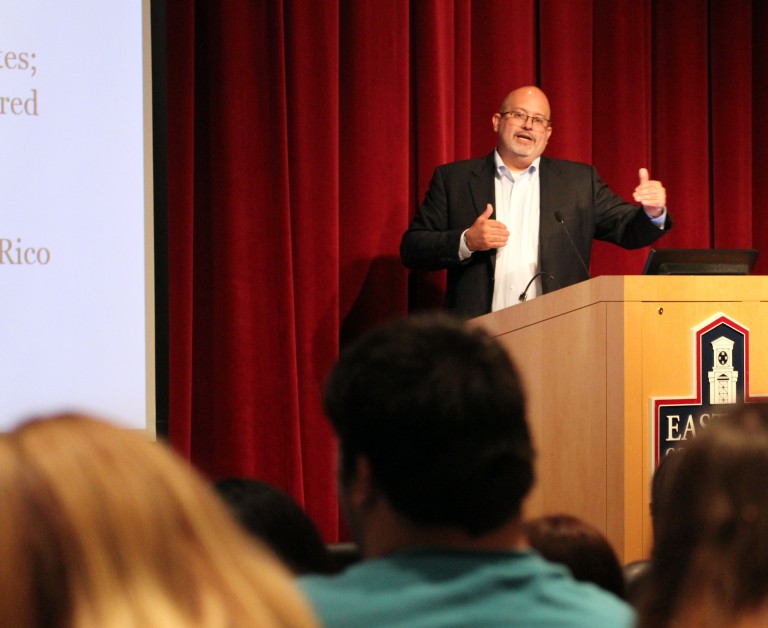


Published on September 26, 2017

Charles Venator-Santiago
Charles Venator-Santiago, a political science professor at the University of Connecticut, appeared at Eastern Connecticut State University on Sept. 20 to discuss the extension of U.S. citizenship to native Puerto Ricans.
The “University Hour” lecture covered the history of this complex extension, dating from 1898 to present day. Controversy over the citizenship status of Puerto Ricans has come to light in various contexts, explained Venator-Santiago, including the Tuana v. United States federal court case in 2015, which brought attention to the voting rights of U.S. nationals. “This word ‘extension’ is really important,” he stressed.
America gained military control over Puerto Rico in 1898, following the Treaty of Paris ratification. It was governed as an incorporated territory until 1900, when the Foraker Act was introduced to provide the territory a civil government. In 1901, the Doctrine of Territorial Incorporation was established, consisting of three basic elements to lay out the constitutional interpretation of Puerto Rico and other territories. Puerto Rico has been ruled as an unincorporated territory ever since.
The Bureau of Immigration and Naturalization Act (BINA) of 1906 was the first law that enabled those born in Puerto Rico to naturalize as American citizens. By 1917, Congress passed the Jones Act to provide for the collective naturalization of Puerto Rico’s inhabitants.
The Jones Act called for people to choose between keeping their Puerto Rican citizenship or gaining United States citizenship. It did not, however, change Puerto Rico’s territorial status, so those born on the island could only obtain a derivative form of parental, or “jus sanguinis” – blood right – citizenship. Birth in Puerto Rico at this time was equivalent to birth outside of the United States.
Venator-Santiago went on to explain the corrective amendments made to Section 5 of the Jones Act from 1927-1940. In 1940, Congress created legislation granting “jus soli” – birthright – citizenship to those in Puerto Rico. The Nationality Act of 1940 thus established that Puerto Rico was part of the United States for citizenship purposes. Since 1941, birth in Puerto Rico is commensurate to birth in the United States.
That said, Venator-Santiago argued, “The Supreme Court has cherry-picked which rights to extend and withhold,” which is where many debates stem from. As of March 2017, Congress has deliberated 101 bills containing citizenship provisions for Puerto Rico. “There are different kinds of rights that apply differently,” he said. “Puerto Rico is considered to be a foreign place for constitutional purposes.”
According to Venator-Santiago, the arguments surrounding status have focused on two questions – how to simultaneously uphold the status of a person’s Puerto Rican citizenship, and what to do with the economy of Puerto Rico. Despite the ongoing societal discussion on the topic, he pointed out that one of the biggest issues is lack of awareness. “The average American doesn’t have a clue (that Puerto Rican natives are considered United States citizens),” he claimed. “There is no clear understanding among the public.”
Written by Jordan Corey